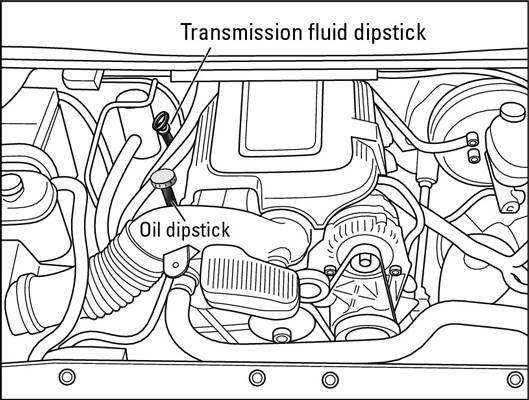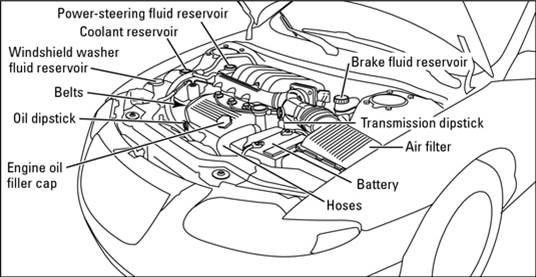Category: Car Diagnostics
-

How to Check Ball Joints
Two Parts: Checking Vehicles with Control Arm Suspension Checking Vehicles with Strut Suspension The ball joints allow the front wheels of a vehicle to move up and down, protecting against road bumps allowing you to pivot while steering. Over time, a car’s ball joints may wear down. If a ball joint starts to loosen, you’ll…
-

How to Check Automatic Transmission Fluid
If your vehicle hesitates when your automatic transmission shifts gears, check the transmission fluid level before you let any mechanic start talking about servicing or adjusting your transmission or selling you a new one. To check your automatic transmission fluid, look for a dipstick handle sticking out of your transmission. This is located toward the…
-

How to Check a Vehicle’s Coolant/Antifreeze
The radiator in your vehicle cools your engine and needs water and coolant (antifreeze) to function. Keep the following points in mind as you check the level of the liquid in your cooling system and add more, if necessary: Rather than open the cap on the radiator, just check to see whether the liquid…
-

How to Check a Vehicle’s Accessory Belts
Many cars have accessory belts that drive the alternator, the power-steering pump, the air conditioning compressor, the water pump in many cases, and other parts of a modern vehicle. Newer cars have a Serpentine multi-accessory drive belt, as shown here. If you drive an older car, you have to check the separate belts, as shown…
-
How to Check a Vehicle’s Brake Fluid
To check your car’s brake fluid, you have to find the reservoir. Its location depends on the type of car you have. The brake booster is on the driver’s side of your vehicle, usually up near the firewall. Just in front of that, sitting on and connected to the brake master cylinder, is the brake…
-
How to Assess Smoke Coming from an Automobile
Exhaust coming from your vehicle’s tailpipe should be clear. If you see smoke coming from your tailpipe, pay attention to the color of the smoke; you can use it to troubleshoot engine problems. It can tell you whether you have a leaky gasket or give you hints about your air/fuel mixture: You see white vapor…
-

How do I know my car is getting its best mpg?
The American addiction to automobiles is legendary. In July 2009 alone, the country logged an estimated 263.4 billion vehicle miles, up by about 5.8 billion from July 2008 [source: U.S. Department of Transportation]. Of course, that was down from July 2007 — the top-ranked July driving month to date in U.S. history — when odometers…
-

How do I know if my shock absorbers reach its service life?
Due to normal wear and tear, shock absorbers do eventually wear out and should be replaced. Shock absorbers make your ride safer and more comfortable. They help your car tires grip the pavement, and they keep you and your car from bumping around on rough roads. In this article, we’ll first have a look at…
-

How Do I Know If My Fuel Pressure Regulator Is Bad?
The fuel system in your car includes, among other components, a fuel pump, a rail that carries the fuel to the engine and a fuel pressure regulator. A problem with any part of the system can cause your vehicle to run irregularly or not run at all. Testing the fuel pressure regulator is a simple…
-

How Can I Test on the Powertrain Control Module?
Powertrain control modules (PCM) are used in vehicles compliant with the second generation of On-Board Diagnostics. This means the vehicle has to have been manufactured after 1996, and any troubleshooting must be done with a diagnostic hardware. The PCM is your vehicle’s central computer, and it is part of the the OBD-II system. The module…
